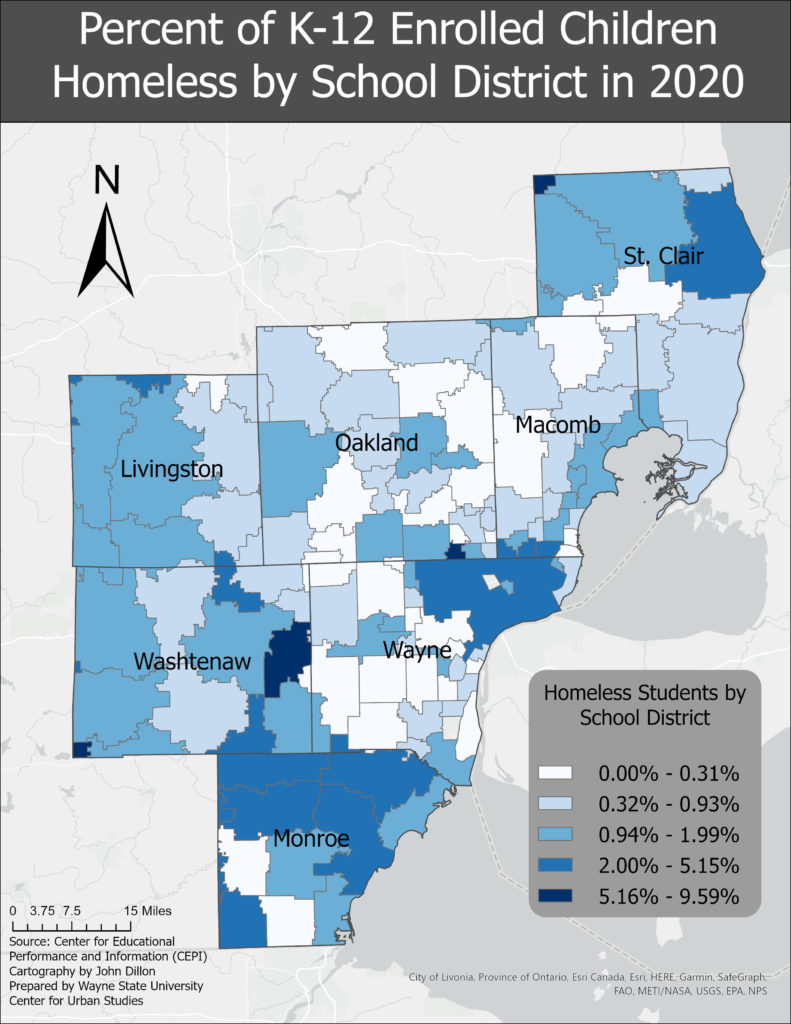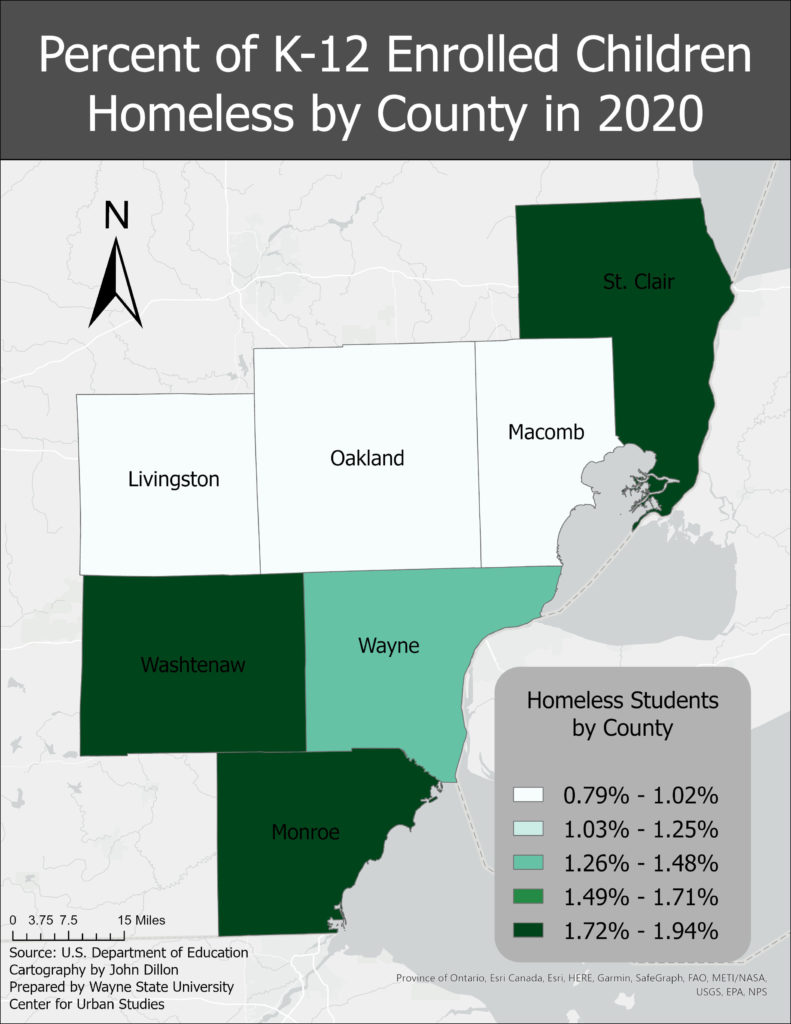Child homelessness in Michigan is real.
According to the University of Michigan, in more than 40 percent of Michigan’s schools more than 10 percent of students struggle with homelessness during the school year. Furthermore, it is believed that even those numbers are under reported in certain areas, including the City of Detroit. Detroit was estimated to have about a 4 percent homeless student rate for the 2020-21 school year, which was equivalent to about 1,700 students according to the US Department of Education’s Center for Educational Performance and Information. However, as noted, it is believed this number is under reported. While Detroit public schools had the highest total number of students estimated to be affected by homelessness, it was the Ypsilanti School District that had the highest percentage of homeless students in the region. According to the data, the Ypsilanti School District had the highest estimated homelessness rate for the 2020-21 school year at about 10 percent, which was equivalent to about 340 students. Oak Park Public Schools had the second highest percentage of homeless students for the 2020-21 school year at about 9 percent, which was equivalent to more than 340 students.


As shown in the maps above homelessness impacts students throughout the region, but those who live in more urban and/or rural districts are impacted more. While the Center for Educational Performance and Information reports the percentage of estimated homeless students, it does not breakdown the age groups most affected. But the 2022 report from the University of Michigan’s Poverty Solutions Initiatives highlights that most homeless students are teenagers, Black, Native American and/or Hispanic and/or transgender.
This report further breaks down that the percentage of Black, Native American and Hispanic homeless students in Michigan in 2019 was 8 percent, 8 percent and 7 percent, respectively. Additionally, it was reported that about 25 percent of transgender youth in Michigan were homeless, according to the study.
While the data shows there are certain demographics that are more impacted by homelessness than others, it is clear that it impacts thousands upon thousands of students in Michigan—more than 22,000 to be exact. Many of these students are unaccompanied minors who don’t often access homeless shelters, or utilize public services. Policy shifts must occur to not only protect students from homelessness, but also provide greater safety nets for them to access healthcare, nutritional and housing services if they do experience homelessness. This means greater investment into K-12 programs, transitional foster care programs and stronger policies to prevent family homelessness.